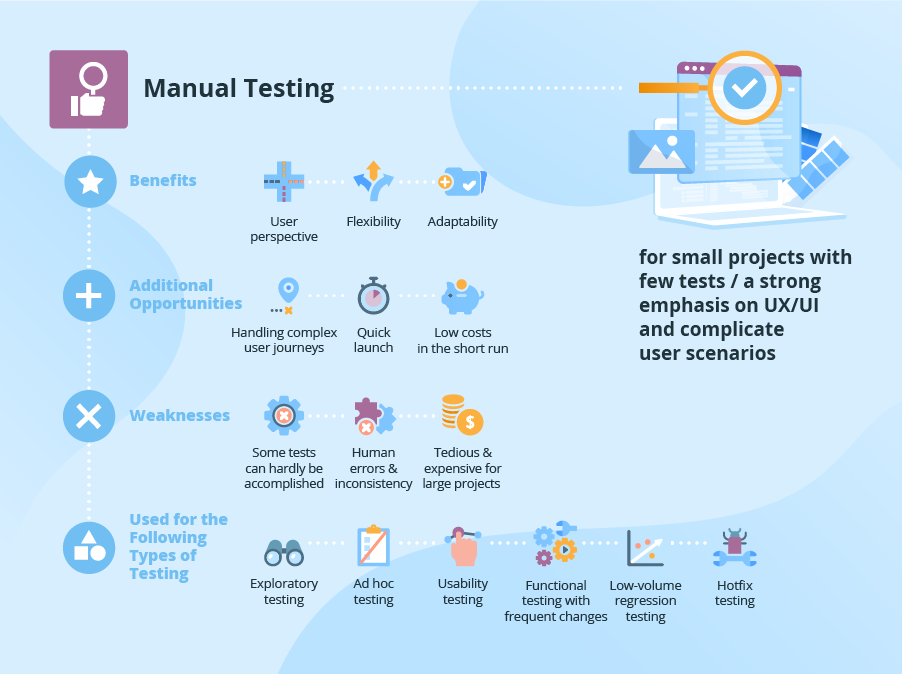This article contains information about Manual Testing versus Automated Testing Usage.
While automation seems to be the norm, not all testing activities should be automated. It might be advantageous to test certain components of a project manually. Only problem is that firms need to understand which approach works best in each situation. It all depends on the particular situation. Quality assurance teams should use manual testing in the following scenarios:
Table of Contents
- Sometimes, it’s necessary to be flexible
- If short-term projects can be active
- When usability is assessed
- Conclusion
Sometimes, it’s necessary to be flexible
Although automation gives testers greater operational flexibility, manual testing is not always as precise as automated. Automated testing is useful in repeated situations and this often means that you will use the same code and scripts every time. Automation involves creating test cases and programming them with an automation tool. Then running the test takes time. This is especially important for testers who have an immediate idea. In this scenario, it would be easier and faster to perform manual tasks. Manual testing allows you to easily observe and test the results. You will not be able to miss any time because automatic tests require extra setup.
If short-term projects can be active
Automation requires significant preparation and expense. Both of these can be unnecessary. Automation is not suitable in this case due to the associated cost. The upfront cost of automation for this project could be too high compared to the return on investment and value it would bring. Manual testing is more cost-effective and profitable in this instance. Automated testing is not justified in short-term projects where automation costs more than the benefits. Small projects, which contributed only minor features and shared very little code with other projects, are unlikely to ever be improved.
When usability is assessed
It can have a huge impact on whether an application succeeds or fails. This goes beyond automated testing to ensure that there are no issues. Because computers execute preprogrammed tasks rather than think independently, they cannot provide the same feedback as a human user when using an app. For example, automated tests can identify flaws in code quickly, but they cannot predict how users interact with that feature or how easy it will be for them to use the app.
The user’s experiences with the tool’s functionality may be key to determining whether other users will use it. This data is not available from manual testing. Human perspectives will be required for exploratory and usability testing. Robots can do perfect repetition but are less adept at following intuitions and exploring. This could make it easier for users to fix bugs when they interact with the app in certain ways.
Conclusion
While automated testing has many advantages, manual testing can be preferred in certain situations. QA teams can speed up processes, improve productivity, and increase overall quality by being able to identify the best approach for each situation.




















